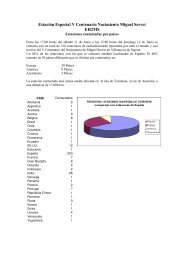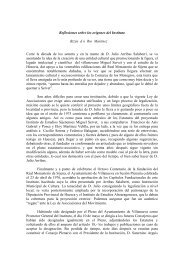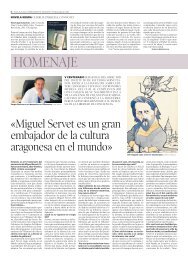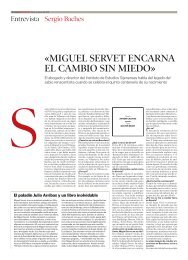New Page
New Page
New Page
You also want an ePaper? Increase the reach of your titles
YUMPU automatically turns print PDFs into web optimized ePapers that Google loves.
<strong>New</strong> Testament and with a knowledge of Christ.<br />
7. The Scripture sometimes shows things as we can see them, sometimes as they are in<br />
themselves, in their reality before God. This is particularly true for the commandments and the promises.<br />
8. Everything that happened to the Jewish nation has to be interpreted as an example.<br />
9. Gods speaks to us according to our human nature, and He has secrets that He does not<br />
share with us. It is a sin to deal with these.<br />
10. The law and the gospel should not be confused.<br />
It is clear from this scheme that the treatise is burdened with repetitions since the first and the<br />
seventh, and again the third, the sixth, the eighth and the tenth belong closely together. On the other hand,<br />
the line of reasoning departs from the itemized principle within the individual themes. Thus the list cannot<br />
really reflect how rich the treatise is in ideas because, as we shall see, sometimes the reflections under the<br />
pretext of the principle are more important.<br />
The passages discussing the relationship of the Old and <strong>New</strong> Testaments connect, of course, most<br />
organically to the whole of Rövid útmutatás. Treating the subject with special favour, this is how the<br />
author introduces the third, the longest item: +Because this third article is very important for the true<br />
understanding of the Holy Scripture, I shall write more amply about it and keep to this order in writing."94<br />
After the above it will be no surprise that it is not really ampler writing but translation since this<br />
lengthy part relies in its entirety on Restitutio. Nearly every sentence is literally translated from three<br />
chapters of De legis et evangelii ac Iudaei et Christiani differentiis so that after the original it takes<br />
subtitles as well: The difference of the Old and <strong>New</strong> Testaments, The Law contains the truth of the body,<br />
the Gospel that of the soul, In the Law the truth of action, in the Gospel that of faith. It relies more heavily<br />
than the parallel chapter of De falsa et vera on the first chapter, while in the case of the other two he<br />
merely translates a few statements deemed to be of crucial importance, such as: the Jewish nation was<br />
given only the external truth, peace on earth, in the law it was lawful to enumerate deeds, in the gospel it<br />
is not. He does not completely adopt Servet's doctrine of justification, and using a formulation different<br />
from Servet's he declares that the elect from among the Jews were saved because they looked upon the<br />
spiritual in the corporeal and were looking forward to the fulfillment by Christ. Since a detailed<br />
demonstration of the adoptions, however, would be too lengthy and full of repetitions, we take two<br />
examples that show that the translator sometimes made changes with regard to Christology.<br />
+They were wearing veils so that +... there was cover before them, so they could<br />
none of them could see the splendour of not see the glory of Christ's face, Eliah covered his face<br />
Christ's face. Eliah covered his face with with the robe, 3.Re. 19. Moses did the same Ex. 3. who<br />
his robe lest he should see Christ's face afterwards could see only his back part through the gap<br />
(3Reg.19). Moses did the same (Ex.3), in the rock, because its fulfillment looked to the future.<br />
who through the covered hole could not Ex., 34."96<br />
see Christ's face, only his back<br />
(Ex.33)."95<br />
+Then for the same reason Moses +When afterwards this Moses spoke to the sons<br />
himself put a veil on his face so that the of Israel, he covered his face lest they should see its<br />
sons of Israel should not see this splendour, because they should not understand the<br />
splendour of Christ on his face: hence inner essence and secret of the laws, indeed, Moses did<br />
also the veil of the letters lest they<br />
34







